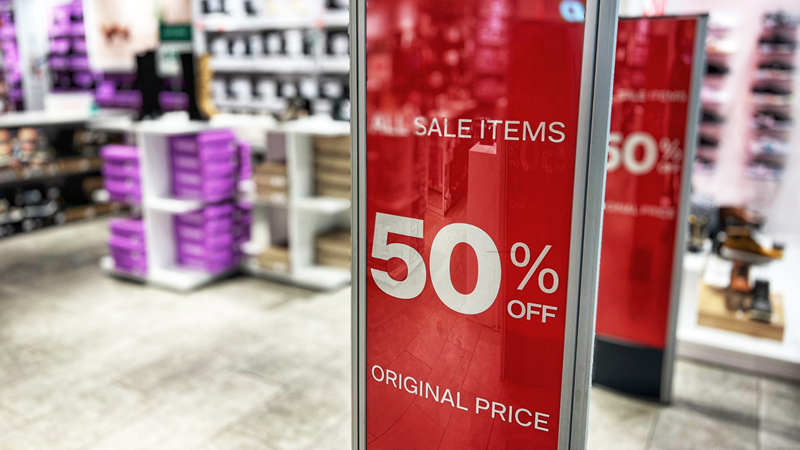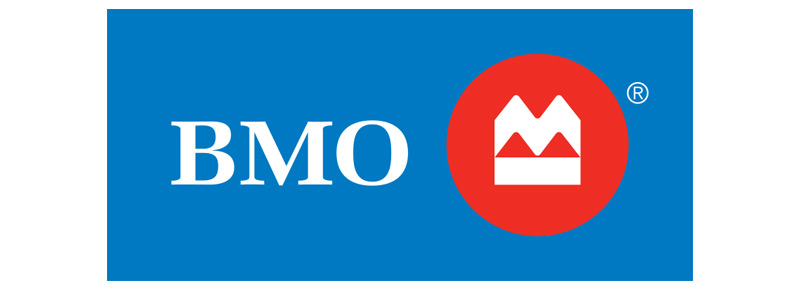Pricing claims and practices: An overview for Canadian marketers
Jul 29, 2025
Deceptive
Standards
The CMA’s Director, Public Affairs and Regulatory Standards, Florentina Stancu-Soare, reached out to the Competition Bureau to get their perspective on what marketers need to know about pricing claims and deceptive marketing practices to avoid putting businesses at risk.
Read on for insights and tips from Josephine A.L. Palumbo, Deputy Commissioner, Deceptive Marketing Practices Directorate, Competition Bureau.
1. Can you share the pricing rules that marketers in Canada need to know?
Under Canada’s Competition Act, all advertising, including pricing, must be clear, accurate, and truthful. This allows consumers to make informed purchasing decisions while fostering a competitive and innovative marketplace in which Canadian businesses can prosper.
In the competitive world of advertising, businesses are constantly looking for ways to grab consumer attention. While creative marketing can help boost sales, misleading tactics may cross the line into illegal territory. To stay on the right side of the law, businesses must avoid these six practices:
It is illegal to make any claim that is materially false or misleading when promoting a product, service, or business interest. Here’s what you must know:
- any marketing statement may be considered a claim. This includes, for example, online and in-store ads, direct mail, emails, social media posts, and endorsements.
- a claim is considered “material” if it influences a consumer’s decision, such as whether to buy or use a product or service.
- when the Competition Bureau assesses whether a claim is false or misleading, both the literal meaning and the general impression it conveys, are taken into consideration. This means considering all the elements of the representation such as the context, words, images and layout.
Planning a big sale? Make sure that if an item is promoted at a bargain, it is available for sale in reasonable quantities, given the nature of the market, the nature and size of the business, and the nature of the advertisement.
Businesses cannot charge consumers a price higher than the product’s advertised price in a specific market. This includes rental prices.
4. Drip pricing
Consumers should be able to trust the prices they see. The initially advertised price must be the full price that consumers must pay, less government charges or fees imposed on consumers such as sales tax. Businesses cannot advertise prices lower than what consumers have to pay by excluding other mandatory fixed charges or fees.
When multiple prices are displayed for the same item, businesses must charge the lowest price shown. This applies to prices on:
- a product, its wrapper or container;
- anything attached to, inserted in or accompanying the product, its wrapper or container or anything on which the product is mounted for display or sale; and
- an in-store or other point-of-purchase display or advertisement.
This does not apply when the old price is removed or concealed.
A price cannot be referred to as the “ordinary price” when it is inflated to create the illusion of offering a better deal. When you claim a price is a sale price or discounted by relating it to a higher regular price, you must be able to validate the regular price. Before you advertise any pricing, make sure one of two tests must be met:
- Volume test: a substantial volume (more than 50% of sales at or above the reference price) of the product must be sold at that price or a higher price within the 12 months before or after the claim. Note that the time period may be shorter depending on the nature of the product.
or - Time test: the product must be offered for sale, in good faith, for a substantial period of time (more than 50% of the six months) before or after the claim was made at or above the reference price. Note that the time period may be shorter depending on the nature of the product.
The Bureau strongly believes that consumers deserve to shop confidently. Clear and truthful pricing practices help businesses comply with the law and build lasting credibility with their customers. More details can be found on our website.
2. What are the most frequent consumer pricing-related complaints the Bureau gets, and how have these shifted in recent years?
The most frequent pricing-related complaints the Bureau receives fall into the general category of selling above advertised price. This category also includes, for example, reports of alleged drip pricing behaviour and businesses failing to adequately disclose important information, such as terms and conditions.
The top products or services cited most often by consumers in these complaints relate to food, travel and tourism, as well as the telecommunication industry.
Complaints in this category have remained in the top 5 group of complaints organized by business conduct for at least the past five years.
3. What emerging trends or innovative pricing practices is the Bureau observing in the Canadian marketplace? Can you share insights on how these may impact both marketers and consumers?
We are observing several trends that impact marketing compliance.
1. AI-driven marketing and pricing
As e-commerce grows and consumer data becomes more accessible, companies are leveraging AI-driven solutions for marketing and pricing strategies. While this technology offers benefits like increased profitability and personalized offers, businesses must remember that the Competition Act prohibits making false or misleading claims that could influence consumers when promoting products, services, or any business interests. The law applies to all forms of commercial products or services materials, regardless of how they were created.
2. Data collection transparency
AI often relies on vast amounts of data to function. In that regard, businesses must also ensure transparency in data collection and usage. They should not make false or misleading claims about what data is collected, its purpose, retention, and management. More information on this topic can be found in our article about Big data and the hidden cost of “free” digital products and services.
3. Pricing algorithms
In general, businesses use these tools to market their products or services more effectively. For example, some algorithms might monitor the market to follow competitors’ decisions such as price changes. Others might recommend certain products based on data about a user or make those products stand out more on an online platform. We have recently published a discussion paper on this topic, called Algorithmic pricing and competition.
4. What are the Bureau’s current priorities regarding pricing claims?
We are committed to responding promptly to issues that are important to Canadians. This is very important to us. We prioritize investigations into anti-competitive practices that make everyday life less affordable, especially in today’s economic climate.
Our current priorities include:
- Drip pricing has long been a priority for the Bureau and continues to be. We are also dedicated to addressing other deceptive practices related to pricing claims.
- In November 2024, we warned consumers about fake urgency cues and have taken action against inflated regular prices and deceptive sales claims. Reviewing the enforcement cases on our website is a great way to get insights through real-world examples.
5. How do consumer complaints inform your enforcement strategies?
Complaints are a valuable source of information for the Bureau, offering insights into trends, investigative leads, potential witnesses, and other critical details. They help shape enforcement strategies, guide recommendations, and inform the Bureau’s priorities by identifying what’s most concerning to Canadian consumers and businesses.
6. What compliance steps should marketers take?
1. Understand your obligations under the law
The most important step for businesses and marketers is to understand what your obligations are under the law. To keep you up to date, the CMA provides marketing specific information and insights, and the Bureau also offers a variety of free resources for you to explore, such as our:
- Compliance bootcamp videos provide an overview of the four laws the Bureau administers and enforces.
- Deceptive marketing practices digests cover our perspective on various key advertising and marketing issues such as online reviews and influencer marketing, drip pricing, scarcity cues, savings claims, and many others.
- Guidelines and publications inform businesses of their requirements under the laws the Bureau is responsible for.
- The compliance hub is user-friendly learning modules with current examples and hypothetical scenarios.
2. Consult the Bureau’s Written Opinion Program
Through this program, businesses can request a written opinion from the Bureau regarding the applicability of one or more provisions of the Competition Act to a proposed practice or conduct. These Written Opinions are binding on the Commissioner if all the material facts have been submitted, are accurate, and remain substantially unchanged.
3. Build a compliance program
Finally, businesses are also encouraged to create and maintain an effective compliance program. It is important to note that even the smallest businesses can have in place a compliance program. Key steps include:
- Build a culture of compliance with management’s support, promote compliance and designate a compliance officer;
- Assess your specific risks, consider the possible compliance and ethics risks to your business;
- Train your employees and communicate regularly;
- Recognize compliance leadership and address misconduct; and
- Regularly evaluate and update your program.
Visit our site for more tips on how to build a successful compliance program.
Understanding how consumers can protect themselves can also help marketers build stronger relationships with their customers. When businesses proactively help educate customers about smart shopping practices, they demonstrate transparency and build trust.
7. What are your smart shopping tips that marketers should understand and share to help consumers avoid deceptive pricing practices?
I would begin by suggesting that consumers take a moment to read the Bureau’s consumer alerts. These articles contain useful information about various types of common scams and deceptive marketing practices, and how to avoid falling victim to them. For fraud specific information, remember to always:
- Stay cautious and watch for warning signs.
- Don’t rush. Take time to think before making a purchase.
- Do research. Compare prices, read reviews, but know that reviews/ratings could be faked, and be skeptical of overly generous offers.
- Know the details. Understand costs, charges, and terms.
- Trust your instincts. If something feels off, it probably is.
- Use a credit card as some offer added protections and dispute options.
- Keep records of ads, receipts, emails, and texts as your evidence.
Finally, it is important to remember that as marketers, you play a dual role in marketplace protection. You are consumers yourselves as well as industry professionals who help maintain high standards and fair competition standards. If you spot questionable practices, reporting these issues to the Competition Bureau helps identify trends and enables authorities to take necessary action. Call us at 1-800-348-5358 (Canada), or fill out an online form! We want to hear from you.
Author:
Josephine A.L. Palumbo, Deputy Commissioner, Deceptive Marketing Practices Directorate, Competition Bureau (Canada)



































